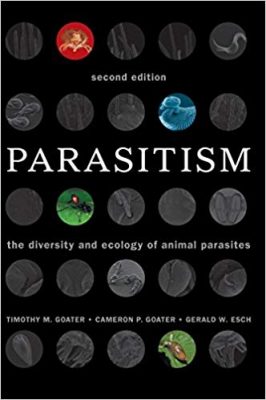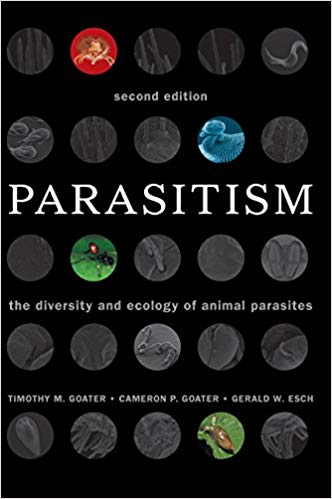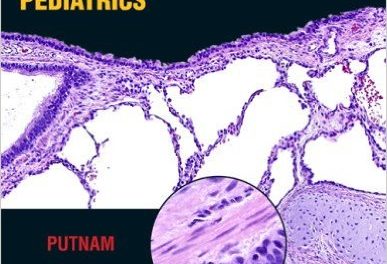 Authors: Timothy M. Goater, Cameron P. Goater, and Gerald W. Esch
Authors: Timothy M. Goater, Cameron P. Goater, and Gerald W. Esch
Publisher: Cambridge University Press – 497 pages
Book Review by: Sonu Chandiram
This book has been written for senior undergraduate and beginning graduate students to provide an understanding of, and appreciate the breakthroughs in parasite ecology, including:
- Parallel advances in parasite diversity
- Life-cycle variation
- Systematics
- Functional morphology
When we think about parasites, our thoughts typically turn negative: these creepy creatures get inside the bodies of animals and humans and often make them ill.
But isn’t it important to be informed about the roles they play in achieving and maintaining ecological balance? And isn’t it important for you to gain information about them that helps you achieve a balanced view of parasites? By that I mean both their negative and positive acts.
That is the reason this book was chosen for review. First let us give you an overview of the contents of this book by listing its chapters blow. Then let us give you below the list, the information we found in an interesting article entitled 5 Reasons Parasites Are Beneficial to Earth written by Mark Boyer
This book begins with an Introduction we urge you to read to gain the perspectives about parasites and various aspects of their lives and behavior:
- Introduction
- Immunological Aspects of Parasitism
- Protista: the Unicellular Eukaryotes
- Mircosporida: the Intracellular, Spore-forming Fungi
- Myxozoa: the Spore-Forming Cridarians
- Platyhelminthes: the Flatworms
- Acanthocephala: the thorny-headed worms
- Nematoda: the roundworms
- Nematomorpha: the hairworms
- Pentastomida: the tongue worms
- Arthropoda: the joint-legged animals
- Parasite population ecology
- Parasite community ecology
- Parasite biogeography and phylogeography
- Effects of parasites on their hosts: from individuals to ecosystems
- Evolution of host-parasite interactions
- Environmental parasitology: parasites as bioindicators of ecosystem health
Mark Boyer, in his article we name above that was published on a website named https//science.howstuffworks.com writes: “In this article we’ll take a look at some of the different ways parasites can be beneficial to humans, animals and even plants. And we’ll also explore a couple of examples of symbiosis — when the two species form a mutually beneficial relationship. Briefly, the five ways parasites are beneficial to Earth and helpful to humans are: v
- On the farm, killing aphids. The No. 1 area in which humans get parasites to do our dirty work is out on the farm. An example, quoting Mark Boyer, “is the Aphidius erviparasite, which sneaks up on unwitting (plant-eating) aphids, lays an egg in them, and then once the egg hatches, the larvae consumes the aphid from the inside out.”
- Helminthic therapy for calming the immune system. “What if we told you that some types of parasites could actually help you? In recent years, scientists have discovered that certain parasites have the ability to interfere with autoimmune diseases. Parasitic worms, or helminths, have a unique effect on their human hosts. Instead of inducing inflammation (the body’s normal response to invasion), they actually calm the immune system.
- Hookworms for curing allergies. “Some people claim that our old friend the hookworm has the ability to cure everything from allergies to hay fever to asthma — but your allergies would have to be pretty bad to knowingly infect yourself with blood-sucking worms.” But Jasper Lawrence, “after successfully contracting hookworms…Lawrence reported that his allergies had subsided, and he recently told the public radio program Radiolab that he hasn’t had an asthma attack or allergy symptoms since his visit to Africa.”
- Parasites helping other animals. “One of the more famous examples of symbiosis is the red-billed oxpecker, a medium-sized bird found in sub-Saharan Africa. The oxpecker rides on the back of large mammals, like rhinos or water buffalos, feeding on the ticksthat are found on their host’s back. So, in this peculiar relationship, the oxpecker gets a free ride and a meal, while relieving the host from an unwanted blood-sucking parasite. Everybody wins, right?”
- Symbiotic relationships. “One such example is mycorrhizal fungi, which can be found at your typical garden supply store. Mycorrhizal fungi colonize the roots of plants, where they absorb mycelium, moisture and carbohydrates from the plant. In turn, they supply the plant with nutrients from the surrounding soil, making it easier for the plant to absorb essential minerals and also helping to protect it from harmful pathogens.”
The aims of this book are: to provide students with a synthetic understanding of the biodiversity, ecology and evolution of animal parasites; to provide insights on the nature of the host-parasite interaction itself; to provide an overview of vertebrate and invertebrate immunity, and to provide a new discipline of ecological immunology.
The authors have successfully accomplished these aims. The first edition of this book was published in 2001. This second edition that was released in 2014 has been revised and updated and has over 300 images, including detailed drawings and micrographs. It also contains case study boxes designed to help students and scientists appreciate the diversity and complexity of parasites.
Authors:
Timothy M. Goater is Professor and former Chair in the Biology Department at Vancouver Island University, British Columbia, Canada. During the past 20 years he has taught courses in introductory biology, parasitology, ecological parasitology, invertebrate zoology, and entomology. His research interests focus on the population and community ecology of parasites.
Cameron P. Goater is Associate Professor and former Chair in the Department of Biological Sciences at the University of Lethbridge, Alberta, Canada. His parasitological roots are: in the communityecology of helminthes of waterfowl on the Canadian prairies, and over the past 15 years, he has taught courses in introductory biology, invertebrate biology, field biology, and symbiotic interactions. His current research interests are in the experimental ecology of helminth-host interactions.
Gerald W. Esch is Charles M. Allen Professor of Ecology at Wake Forest University, North Carolina, where he has taught for 47 years. He is widely regarded to be one of the world’s leading ecological parasitologists, and served as editor of the Journal of Parasitology for 19 years







